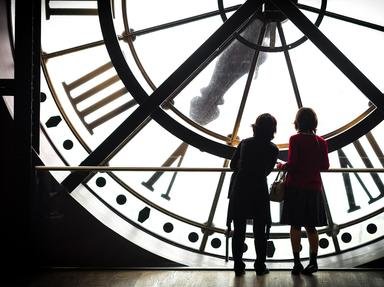Quiz Answer Key and Fun Facts
1. The original Roman Calendar consisted of ten months and had a total of 304 days. Which two months from our current calender were NOT included on the original Roman Calendar?
2. In 46BC the Roman Calendar was replaced by the Julian Calendar. Who was it that persuaded Julius Caesar to reform the Roman Calendar in order to produce a much more manageable format?
3. The Julian Calendar was decreed by Caesar to be made up of three 365 day years and one 366 (leap) year. In 9BC, however, it was discovered that the priests assigned to the computing of the calendars had been adding the leap year incorrectly. How many years apart had they added the leap years?
4. Now we come to the Gregorian Calendar, which is the one we use today. It is based on a cycle of 400 years, made up of 146,097 days. By equally dividing the days by years, each year is an average of how many days?
5. Now we get to look at the Julian Period. Please do not confuse this with the Julian Calendar. The first Julian Period commenced at noon on January 1st. In in which year?
6. The start of a Julian Period is determined by the convergence of three calendrical cycles. The first is called the 'solar cycle' and is represented by the number of years it takes the days of week, as they apply to each particular day of a particular year, to be repeated in the Julian Calender. How many years is this cycle?
7. The second converging cycle used to determine the Julian Period is called the 'Metonic cycle'. This is represented by the period (in years) it will take the phases of the moon to recur on (almost) the same dates of the year. How many years make up this cycle?
8. The third converging cycle that is used in the determination of the Julian Period is 15 years in length. It is called the 'Indiction'. What is used to determine this factor?
9. How long, in years, is a Julian Period?
10. A derivative of this is the Julian Date, which essentially assigns a number to every day since the commencement of the first Julian Period. In which of the following fields is the use of this Julian Date most likely to be used?
Source: Author
pollucci19
This quiz was reviewed by FunTrivia editor
bloomsby before going online.
Any errors found in FunTrivia content are routinely corrected through our feedback system.


